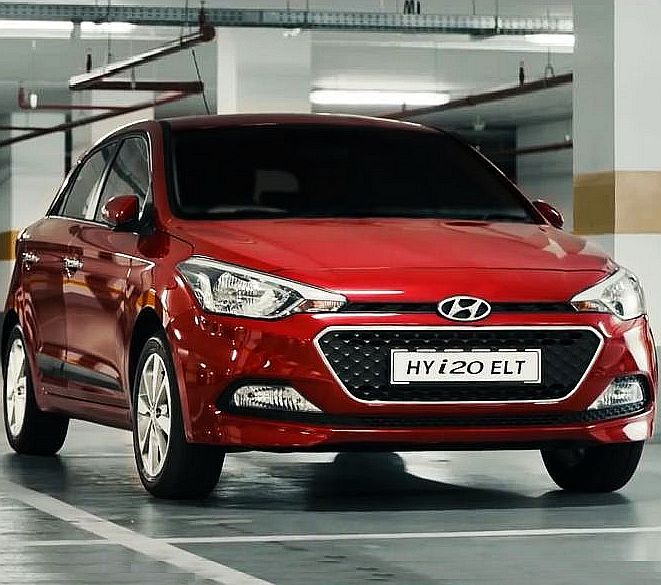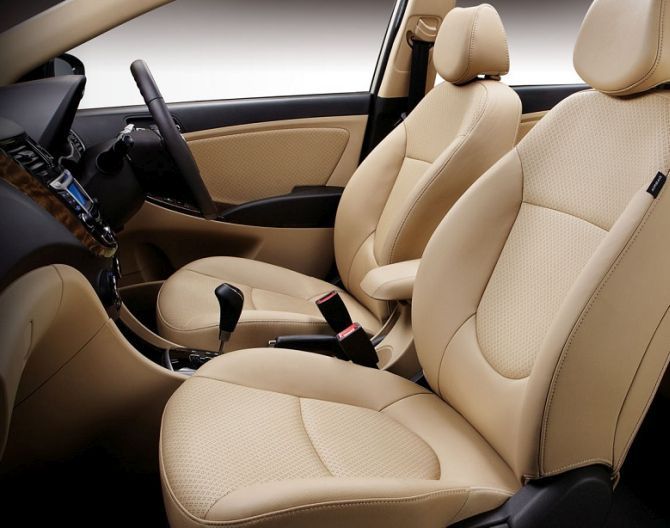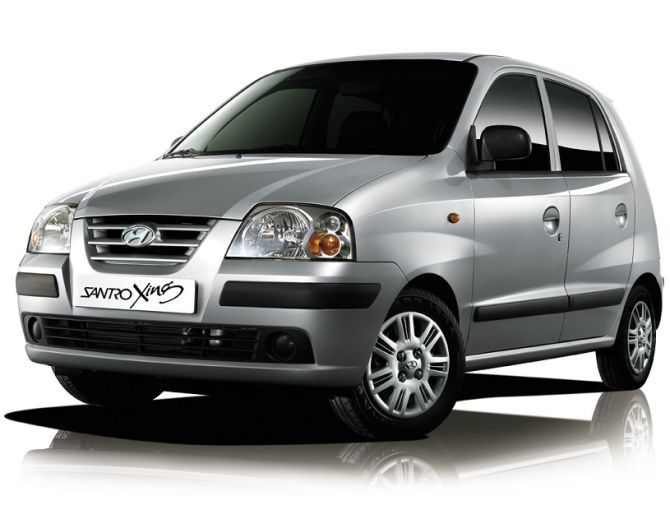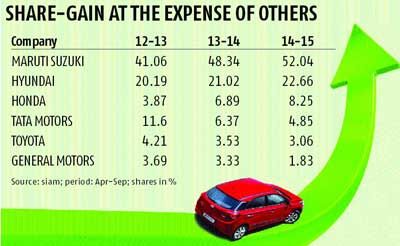
India’s top two manufacturers, Maruti Suzuki and Hyundai Motor India, control 75 per cent of the 1.8 million unit-per year domestic car market.
On the other hand, nine brands, including those of players such as Toyota and General Motors, some of world’s largest automakers, have struggled to have a consistent growth in this market.
Yet, Hyundai, 16 years into operations, continues to do well.
Its market share has hit an all-time high of 23 per cent.
Its latest models such as Grand i10, Xcent and i20 Elite seem to have played no small role. 
The Grand i10 is an all-new product, bridging the gap between the older i10 and the i20, while the Xcent, launched earlier this year, is a the compact sedan built on the Grand i10 platform.
The i20 Elite, a premium hatchback, is the latest to arrive in showrooms.
Rakesh Srivastava, senior vice-president (sales and marketing) at Hyundai, says, “While the world focused on price, Hyundai competed on it while bringing in unique features.
"While everyone tried a competitive price, they sacrifised features or style.
"Hyundai continued to believe in aspirational values many of which were first in segment”, says Srivastava.
After the tall hatchback Santro in 1998, Hyundai straddled categories like mid-segment and premium sedans and sports utility vehicles.
But more importantly, it has been nimble-footed in adjusting its line-up over times. Hyundai’s models such as the Getz, Accent, Terracan, Tucson and Sonata have been phased out and replaced by newer models, while the Verna and Elantra, have been facelifted.
Hyundai’s styling alsostands out in comparison to some other global giants such as Toyota.
In 2011, Hyundai became more aggressive in designing the exteriors of its cars.
A new fluidic design was meant to capture ‘elegant composition of flowing and dynamic finishing’.
However, its oldest warhorse, the Santro, remains one of its largest-sellers, clocking nearly 5,000 units per month, despite Hyundai launching the mini car, Eon, in line with its current styling language, at a price below the Santro.
Even then, all but the Santro and Santa Fe (like Verna, Sonata, i20 Elite) bear the fluidic design philosophy. 
Competition’s loss
Hyundai’s gain in market share has come at the expense of others (refer chart).
These include Tata Motors, General Motors, Nissan, Renault and Toyota, all of whom are struggling to attract buyers despite multiple new launches.
For instance, Tata managed to clock sales of a little over 3,300 units of its new model, Zest, a compact sedan, that comes with a host of features and is the lowest-priced in the segment.
In contrast, Hyundai’s Xcent clocked sales of almost 7,000 units in the same month.
Similarly, GM’s Chevrolet Sail and Sail UVA, Toyota’s Etios and Etios Liva, Nissan’s Micra and Sunny and Renault’s Pulse and Scala have failed to generate volumes expected from them.
Most are selling between 500-2,000 units a month.
Local time
“Hyundai has understood the nitty-gritties of the market, in all these years. Its after-sales service and cost of spares, which are at par with the market leader (Maruti) have helped the brand”, says an analyst.
Like Maruti, Hyundai, too, has laid emphasis on local development, which has allowed it to minimise foreign content and control costs.
More than 500 engineers, at Hyundai’s Hyderabad centre, work on customising its global products, such as the latest Elantra, for India. “Product clinics are carried out which helps in customising.
There were two Grand i10s made, one of which was for India, Xcent was made in India, only while the i20 Elite is sold only in India”, Srivastava says.
Hyundai has gone deeply local with its reach too.
More than 320 of its 900 pan-India sales outlets are located in rural areas.
Small cars like i10, Eon, Santro and i20 are the crowd-pullers. From around 8 per cent, Hyundai is confident of hiking rural contribution to 20 per cent.
Hyundai is readying to enter categories not represented by it yet.
It will launch a new compact SUV to compete with the Ford Ecosport and Renault Duster, next year.
It will, in fact, beat Maruti’s similar product by a full year.
This will be followed by a multi-purpose vehicle similar to Maruti’s Ertiga and Honda’s Mobilio.
Soon, Hyundai will upgrade its showrooms to give it a modern look.
The design stress by the manufacturer is already being carried out under its Global Dealership Space Identity programme (already introduced in India) which would unify the look and feel of dealerships, no matter where it is in the world.
This will lead to open, airy showrooms with floor-to-ceiling glass, topped by a bronze-colored roof structure. Around 40 such showrooms will come up in one year.
It is not just its headstart in India, then, but design and most new launches have worked for the Korean chaebol, too.











